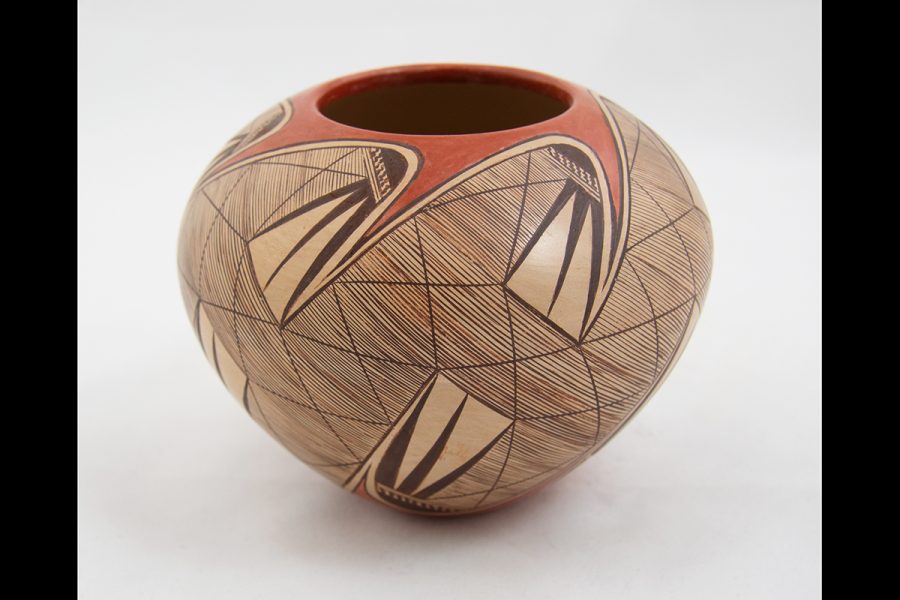Krannert Art Museum acquires new Native American art
Photo Courtesy of Krannert Art Museum
A piece of pottery from a recent acquisition of art from Native American artists is pictured above. The pot features imagery of abstracted feathers, wings, waves and crosshatching that refer to Hopi stories about their ancestors.
Mar 8, 2021
The Krannert Art Museum has recently acquired many artworks to showcase the history of Native American art. This is part of a larger initiative taken by KAM to increase awareness of women, people of color and Native Americans.
KAM has received artworks ranging from paintings and glasswork to the biggest donation yet, which is over 100 works of Pueblo pottery, according to Julia Kelly, KAM’s assistant director for marketing and communications.
“Fairly early in the Krannert Art Museum, we understood that we have a role to play on campus in showing the contemporary relevance and creativity of amazing artistry by Native American artists, African American artists and women artists of all time periods,” Kelly said.
One of the artworks given was a painting called “Loss” by Kay WalkingStick, who is known for multidimensional panel paintings. Another artwork is called “Glass” by Preston Singletary, who works solely with glass. These are just some of the recently acquired artworks by KAM that are currently on display in the decorative arts gallery or anyone to view.
Despite the current pandemic, KAM has taken many precautions to ensure student safety. Walk-ins are currently in place for any student interested in viewing the different galleries.
Get The Daily Illini in your inbox!
The addition of these Native American artworks will increase the total works of art at KAM to over 11,000, with nine permanent galleries and four temporary galleries. Some of the new artworks are already on display in the decorative arts gallery and the Pueblo pottery will all available to see during an exhibit next spring semester.
“When you come to the museum, even if you’ve been in the European painting gallery, the decorative arts gallery or the many different galleries here, each time you walk into these places, you’ll see completely new art,” Kelly said. “This keeps things fresh and allows you to see something completely different in your next visit.”






